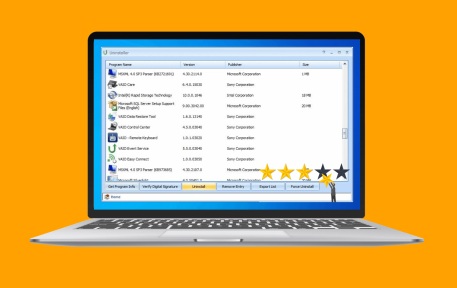
In an increasingly digital world, the demand for efficient and user-friendly image management tools has grown exponentially. Pixwox is one such platform that has gained popularity among users seeking a reliable solution for organizing, sharing, and editing images. In this comprehensive article, we will delve into Pixwox, exploring its features, highlighting alternatives, and providing key insights to help you make an informed decision for your image management needs.
Understanding Pixwox
Pixwox is an online image management platform designed to simplify the process of storing, sharing, and editing images. It offers a range of features aimed at both individual users and businesses, making it a versatile tool in the realm of image management. Let’s dive into some of the key features that Pixwox offers:
1. Image Organization
Pixwox allows users to create folders and subfolders for efficient image organization. This feature is particularly beneficial for businesses and individuals dealing with large volumes of images, such as photographers, graphic designers, and marketers. It ensures that you can find the image you need quickly and easily.
2. Collaboration
Collaboration is a critical aspect of image management, especially in team settings. Pixwox offers collaborative features that allow multiple users to work on and access the same set of images. This makes it a valuable tool for businesses that require teamwork in image-related projects.
3. Image Editing
Pixwox offers basic image editing tools that allow users to perform tasks such as resizing, cropping, adding text, and applying filters. While it may not replace professional image editing software like Adobe Photoshop, it is sufficient for quick adjustments and enhancements.
4. File Formats
Pixwox supports various image file formats, ensuring compatibility with a wide range of images. This includes common formats like JPEG and PNG, as well as RAW files often used by photographers.
5. Mobile Accessibility
In a world where mobile devices play a crucial role in our daily lives, Pixwox ensures accessibility by offering a mobile app. This allows users to manage their images on the go, further enhancing its usability.
6. User-Friendly Interface
One of Pixwox’s strengths is its user-friendly interface. Navigating through the platform and accessing its features is intuitive and requires minimal learning curve.
7. Security
Image security is a paramount concern for many users, and Pixwox addresses this by offering secure cloud storage for your images. It also provides options to set access controls and permissions, which are essential for businesses handling sensitive images.
8. Search Functionality
With the ability to tag images and add descriptions, Pixwox makes it easier to search for specific images within your collection. This feature saves valuable time and increases overall efficiency.
9. Integration
Pixwox supports integration with popular third-party applications like Dropbox and Google Drive, making it easier to import and export images between platforms.
10. Pricing
Pixwox offers a free plan with limited storage and features. For users requiring more advanced features and larger storage, there are subscription plans available at competitive prices.
Alternatives to Pixwox
While Pixwox is undoubtedly a robust image management platform, it’s essential to explore some of its alternatives to understand how it compares to the competition. Here are a few notable alternatives:
1. Google Photos
Google Photos is a popular image management platform known for its cloud-based storage and seamless integration with other Google services. It offers features like automatic organization, image editing, and easy sharing. Google Photos is a strong choice for those already invested in the Google ecosystem.
2. Adobe Lightroom
Adobe Lightroom is a professional-grade image management and editing tool. It’s ideal for photographers and designers who need advanced editing capabilities. While it comes with a steeper learning curve, it offers unparalleled image editing features.
3. Dropbox
Dropbox is a well-known cloud storage service that allows users to store and organize their images. While it doesn’t offer the same image-specific features as Pixwox, it’s an excellent choice for general file storage and sharing.
4. Canva
Canva is a popular design platform that’s user-friendly and ideal for creating visual content. It offers image organization and basic editing features, making it a versatile choice for content creators.
5. SmugMug
SmugMug is a platform designed specifically for photographers. It offers customizable websites for showcasing your photography, e-commerce capabilities, and a robust set of image management features.
6. Flickr
Flickr is a photo and video hosting platform that focuses on image sharing and community engagement. It’s an excellent choice if you want to showcase your images to a broader audience.
Key Insights and Considerations
When choosing an image management platform, it’s essential to consider your specific needs and preferences. Following are important key insights and considerations to keep in mind:
1. Purpose
Define the primary purpose of your image management needs. Are you an individual looking to organize your personal photos, a professional photographer needing a portfolio platform, or part of a team requiring collaborative features?
2. Integration
Consider your existing digital ecosystem. If you’re already using services like Google Drive or Adobe Creative Cloud, it might be more convenient to choose an image management platform that integrates seamlessly with these tools.
3. Storage Requirements
Evaluate the volume of images you need to store. Pixwox offers various subscription plans with different storage capacities, so choose one that aligns with your requirements.
4. Budget
Determine your budget for image management. While Pixwox’s pricing is competitive, other platforms might offer more cost-effective options or additional features that justify a higher price.
5. User Interface
User-friendliness is critical. Test the platform’s interface to ensure it meets your preferences and needs. Some users prefer a simpler interface, while others require a more advanced and feature-rich experience.
6. Security and Privacy
If you deal with sensitive images, prioritize platforms with robust security features and privacy controls. Look for options that offer encryption and the ability to set access permissions.
7. Future Growth
Consider your future needs. Will your image management requirements grow? Ensure the platform you choose can accommodate your evolving needs.
Conclusion
Pixwox is a versatile image management platform that offers a range of useful features, making it suitable for both individuals and businesses. However, as with any software, it’s essential to explore alternatives and consider your specific needs and preferences before making a decision.
Whether you opt for Pixwox, Google Photos, Adobe Lightroom, or any other image management platform, the key is to choose a solution that simplifies your image management tasks, enhances your productivity, and aligns with your long-term goals. With the right choice, you can take control of your image collection and unlock its full potential.



